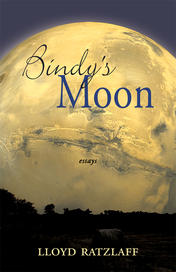Body, Mind & Spirit
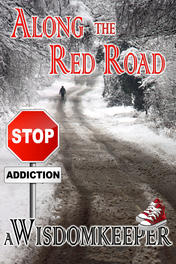

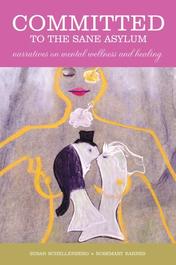
Remarks from the Launch of Committed to the Sane Asylum
Edward Day Gallery, Toronto, Canada, January 21, 2009
Susan Schellenberg and Rosemary Barnes
Susan: Hello, Im Susan Schellenberg.
Rosemary: I'm Rosemary Barnes.
Susan: Once, a long time ago, Susan exhibited her art at Women's College Hospital as part of an event honouring the December 6, 1989 massacre of women in Montreal. Susan asked Rosemary to read over the wall text which described her experiences of healing from mental illness. Rosemary said to Susan,
Rosemary: “What you've written is very interesting, but it's way too long. You should make it shorter for the exhibit and write a book. ” Then, so long ago that no one can remember exactly when it occurred, Susan asked Rosemary,
Susan: “Do you want to write a book with me?” Rosemary said yes. Susan gave Rosemary Conversations Before the End of Time, an art history book of conversations that asked, “What, given state of the planet should art be at the end of the millennium?” The book inspired Susan and Rosemary to include in their book conversations about mental health care with Susan's experiences as the case history.
Rosemary: Conversations with mental health professionals, feminists, artists and a business woman would explain diverse perspectives on mental health as the 1990s came to an end and the new millennium approached. A book would be easy, completed within six months. In 1996, psychiatrist Dr. Mary Seeman, psychologist Dr. Brenda Toner, sociologist and nurse Dr. Marg Malone, artist Paul Hogan, storyteller the late Helen Porter and businesswoman and sociologist Dr. Gail Regan all gave hours of their time for conversations.
Susan: Transcripts were prepared and these people again gave generously of their time to review and revise these transcripts. A manuscript was prepared, a publisher sought and after many inquiries, a press agreed to review the manuscript. Reviewers—unknown to Susan and Rosemary and unavailable to be thanked publically—made excellent, and positive suggestions for changes, while the press decided it was not the best kind of book for their marketing abilities.
Rosemary: Susan and Rosemary were discouraged, but revised the manuscript. In 1998, Susan's Shedding Skins art was installed as a permanent exhibit in the lobby of the Centre for Addiction and Mental Health, Clarke site. Jean Simpson, Chief Operating Officer at the Centre, and Dr. Paul Garfinkel, President of the Centre and Chair of Psychiatry at the University of Toronto, greatly encouraged both Susan's art instillation and the joint book project.
Susan: New insights and further revisions called for an additional conversation with psychiatrist Dr. Cheryl Rowe. Friends and colleagues were asked to discuss the project or—a big favour—to read and comment on the manuscript. Maureen Edgar, Dr. Sarah Maddocks, Dr. Gail Regan and Dr. Cheryl Rowe all read the entire manuscript and suggested changes. Their generosity and encouragement lifted Rosemary and Susan's flagging spirits and inspired further revisions. In 2000, Susan Macphail, Louise Fagan and Elaine Pollett of the Women's Mental Health Action and Research Coalition arranged for Susan and Rosemary to give a presentation in London, Ontario. The audience's standing ovation offered enormous encouragement. Subsequent invitations from Brian McKinnon at Alternatives Mental Health Services, Dr. Anne Oakley at the Women's College Hospital Brief Psychotherapy Centre for Women and Dr. Arpita Biswas at the Toronto East Counselling and Support Services made further presentations possible and provided valuable feedback.
Rosemary: Letters of inquiry, proposals and occasionally boxes of manuscript flew out to publishers, agents, well-placed contacts. People listened and read, made supportive comments and explained, “unfortunately, we cannot proceed with this project”. Something was wrong. More specific inquiries uncovered that the manuscript, while promising, was still a “mess” as one professional artist informed Susan and Rosemary while speaking words of great kindness and strongly urging them to continue. A search was begun for a professional editor. Author Eve Zaremba suggested artist and filmmaker Lynn Fernie, who suggested Pedlar Press publisher Beth Follett who suggested editor and poet Jacqueline Larson.
Susan: Jacqueline Larson read the manuscript, conveyed that she understood what Susan and Rosemary were trying to do and agreed to take on the project. Rosemary, Jacqueline and Susan met for ginger tea and desserts at Susan's home. Jacqueline's comments were homeopathic. Evenings of delightful conversations, great encouragement and critiques so small, precise and gently delivered that you'd wonder if anything had happened. These evenings transformed the manuscript “mess” into a suitable submission.
Rosemary: Jacqueline helped Rosemary and Susan to submit to the Wilfrid Laurier University Press, where Acquisitions Editor Lisa Quinn and two further reviewers—again unknown to Susan and Rosemary—made further excellent suggestions for changes and agreed that the manuscript should be published. Lisa and marketing specialist Leslie Macredie helped Rosemary and Susan to feel welcome at the Press and to conclude a contract for publication. Jacqueline edited the final manuscript. Chris Hoy and David Schellenberg designed a striking cover, Dr. Mary Seeman provided a strong jacket endorsement.
Susan: Nancy Webb did proofreading with a fine-toothed comb. And so the story came to an end as Managing Editor Rob Kohlmeier and other staff at the Wilfrid Laurier University Press transformed this complex manuscript with multiple voices, clinical records and art reproductions, into a beautifully designed and easily readable book.
Rosemary: This book was published in the cold of early December 2008 and tonight is being launched. We'd like to thank Leslie Macredie and Clare Hitchens for their help with marketing; Susan's nephew has already found Committed to the Sane Asylum at a bookstore in Winnipeg. We'd like to thank Mary Sue Rankin, owner of the Edward Day Gallery, for providing this beautiful space, Chris Hoy and David Schellenberg for producing the lovely electronic and print invitations to this event and Kelly, Brett and Vincent for their assistance with arrangements today and tonight.
Susan: We hope you will join us in thanking the renowned Toronto Jazz bassist Rob Clutton for tonights music. [pause] Many of you are friends, colleagues and family who have been important in our lives for many years. We thank all of you for coming and for all your support, sometimes unknowingly, for this project.
Rosemary: We'd now like to read briefly from the Introduction to Committed to the Sane Asylum.
Susan:
“There will be a place for Susan after the war, Mrs. Regan, ” was the doctor's response when my mother asked if something could be done about my artistic nature. It was 1939, I was five and the Second World War had just begun. Armed with my father's promise that a day would come when pictures of war would no longer be on the front pages of newspapers, I settled into dreaming as I waited for war to end.
Close to VE day, I dreamed a marriage between two fish. The fish dressed in traditional human wedding attire sailed off to their honeymoon in a seahorse-drawn carriage. My grade five teacher and mother, disturbed by the excellence of my fish composition, jointly concluded that despite my effort, a sixty rather than one hundred percent grade would better serve the taming of my imagination and good of my soul.
There was no let up in my Irish Catholic grooming. While the seeds of the Vietnam war were being sown and the Korean and Cold wars were raging, I trained as a nurse, travelled the obligatory three months in Europe, then broke with the Regan tradition of marrying Irish by falling in love with a first generation German Canadian. While my husband worked at excelling in business, I gave birth to the first four of our five children in four years, helped nurse my ill and dying parents and gave my all to being a glamorous corporate wife. Though exhausted, I blossomed.
In 1969, as an estimated 1 million Americans across the US participated in anti-Vietnam War demonstrations, protest rallies and peace vigils, I too began to protest but my demonstrations took the form of a psychosis.
I was solely treated with prescribed anti-psychotic drugs during my three-week stay in Toronto's, Lakeshore Psychiatric and for the ten years that followed. My former husband and I understood psychiatrists had explained my illness as schizophrenia. My willingness to take the drugs was influenced by a nursing background that taught schizophrenia was a chronic, irreversible, degenerative illness controlled solely by drugs and by my four small children's need of a well mother. Additional reasons for my drug taking included the mirroring of graphic and disturbing extremes in schizophrenic behaviours that I witnessed during my nursing career as well as during my stay at Lakeshore Psychiatric Hospital, the lack of any other explanation or meaning about my diagnosis being given to me by my caregivers, and my willingness to place sole authority for my health in doctors' hands. The combined effect of these motivating factors contributed to my certainty that I suffered from a chronic illness with no hope for recovery.
Ten years later, while Quebec was considering a split from the rest of Canada, I too threatened to split apart. My suicidal urges triggered by anti-psychotic drug side effects began to manifest and accelerate. On one of the darkest days in that period, the smallest of acts that suffice to say here represented my first ever act in my own best interests, led me to find a psychiatrist willing to supervise my withdrawal from the drugs. Soon after my decision to withdraw from drugs, I made deep commitments to heal my mind from the causes of my psychosis, heal my body from the drug side effects and to paint a record of my dreams as my mind and body healed.
Rosemary:
Healing was never mentioned when I began training as a clinical psychologist, about seven years after Susan was hospitalized with a psychotic break. Though my graduate studies in psychology had prepared me to become a university professor, scarce employment opportunities forced a career change. In September 1976, I began a post-doctoral fellowship in clinical psychology at a prestigious university-affiliated psychiatric hospital, an apprenticeship of the kind undertaken by students in every health profession both then and now.
Had any one mentioned “healing”, which few did in mental health settings, I would have considered the word flowery, quaint or quirky with connotations of primitive or marginal beliefs and practices, as in “faith healing”. Had I been challenged, I would have argued that patients improved, so clinical practices must be healing; a poetic word such as “healing” was simply inappropriate in a scientifically grounded professional setting. I would not have recognized clinical constructs and terminology to be obscuring lacunae in theory and practice.
In 1969, as Susan protested through psychosis, I protested by falling in love with one woman, then another. As I had grown up in a conservative religious American family, I understood these experiences to be equivalent to mental illness and deeply shameful. By 1976, I reluctantly reconciled myself to the conclusion that such feelings meant I was lesbian. I met other lesbians and gay men in the 1970s ferment of the gay liberation and feminist movements. Lesbian-feminist groups, new friendships and the electric creativity of the day allowed me for the first time to locate myself with confidence in the larger world. Feminist ideas infused my life with new meanings and possibilities. I learned feminist and anti-psychiatry critiques of mental health care and resolved to do be a better professional than those I read about.
For some years, I had a professional career that I understood and enjoyed. After postdoctoral training, I worked for nine years as staff psychologist at a university-affiliated general hospital and matured as a clinician and researcher. In 1986, I moved to a smaller general hospital as head of the psychology department and moved to address the split between my personal and professional lives by joining a small informal group of hospital professionals working to nurture feminist values in health care. I met Susan when she and I worked in the same political faction during the turbulence surrounding a proposed merger between the small hospital and a larger health care facility.
Then, I became lost. My ability to live with the split between feminist values and professional career commitments eroded as I became increasingly unconvinced that hospital mental health care gave paramount concern to human well-being. I felt cynical, exhausted and angry about my apparently successful career.
Susan and Rosemary:
When experiencing unbearable despair, we, Susan and Rosemary, first with wordless groping, later with increasing clarity, committed to live differently, to engage in a creative undertaking. We turned within and examined our lives to locate our most deepest values, then worked to honour these values in our day-to-day thinking, relationships and activities. We came to prize living “with an eye to delight”. We focused, to put it in health care lingo, on well being and quality of life.
If the shift to valuing pleasure sounds oh-so-lovely (cue sunshine, birds chirping, soft music), please excuse us for being completely misleading. Read on and you will find that we both moved in desperation across dark and terrifying landscapes, certain only that we could not go on as we had before. We will tell of inching along shadowy precipices of fear and doubt, harrowing encounters with outer and inner critics, lonely nights in moonless landscapes, painful deaths of false selves and other trials too terrible and numerous to mention just yet. .. .
We met in the context of local hospital politics, a kind of war zone, have worked together as friends and never been in a doctor/patient relationship. However, our ability to learn from one another, to collaborate, to nurture each other, to appreciate strengths and to balance weaknesses is an example of the honest, mutually respectful, interdependent relationship we see as essential to healing and well being.
We hope that this book shows in practice what we deeply believe, that emotional disturbance—and who among us has not experienced this in some form?—can be best addressed by living with an eye to delight and commitment to the creative, relational, earthy process of healing.
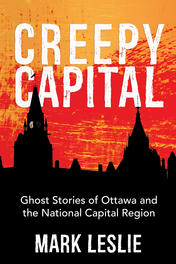
The Grant House at 150 Elgin
On a chilly Halloween eve in 2014, just days prior to the grand re-opening of Beckta Dining & Wine, owner Stephen Beckta drank champagne from a 140-year-old glass that once belonged to the Grant family, who used to live at that residence.
When questioned as to whether he felt concerned regarding the stories he had heard about the building’s history and the alleged spirit that still resided in the building, Beckta shrugged with a laugh and said: “Not at all.”
But not everybody else is so brave in their approach.
The building at 150 Elgin Street was originally built for Doctor James Alexander Grant in 1875, designed by Bradish Billings Jr. The home, considered a mansion, would have cost approximately $11,000 to build at a time when the average home’s cost was less than half of that.
Born on August 11, 1831, in Inverness, Scotland, James Grant came to Canada not long after his birth when his parents settled in Glengarry, Ontario, about an hour’s drive south-east of Ottawa. There, Grant’s father set up a medical practice and established himself as a one of the region’s most distinguished physicians. Grant followed in his father’s footsteps by receiving his undergraduate degree at the University of Queen’s College (Queen’s University) in Kingston, Ontario, then moved on to study medicine at McGill College in Montreal, Quebec. He became a medical doctor in 1854 and established a practice in Ottawa. Grant married Maria Malloch in 1856 and the two had a dozen children together.
Further following in his father’s manner, Dr. James Alexander Grant ran a very successful medical practice. Due to his renowned skills and relentless work ethic he became known and sought out by many of the more prominent members of the local community.
Grant published several articles in medical journals in Canada and England and his vast interest and knowledge in the scientific fields led to his role as a charter member of the Royal Society of Canada. In addition, he served as president of the College of Surgeons on Ontario and the Mechanics’ Institute and Athenaeum of Ottawa. Grant also served as the official physician for the Governors General from 1867 to 1905.
Grant also became involved in the political scene. He served as a Member of Parliament for the Conservative Party between 1867 and 1874, as well as between 1893 and 1896.
After saving the life of Queen Victoria’s daughter, Princess Louise, after her sleigh accident near Rideau Hall, Grant was knighted “Sir” James Grant and he was awarded the Most Distinguished Order of St Michael and King George (KCMG). Grant died on June 5, 1920, after having lived at his Elgin Street home for nearly half a century.
Given both the status that he held as well as the long-time association with the building, it’s no wonder that when tales of odd and eerie occurrences started to be reported that people’s thoughts turned to Sir James Alexander Grant. Perhaps Grant’s role as a physician — which included stories that the basement of the residence at 150 Elgin was used as a morgue — has been a factor in some of the ghostly tales that are shared about the building.
Though the tales didn’t start until the thirty-seven-year run of a very successful restaurant known as Friday’s Roast Beef House, the building itself has survived a significant number of changes.
After the Grant family vacated the building, it was purchased by the University of Ottawa’s University Club before the 1930s. In the late sixties and early seventies, highway construction projects threatened the building, and in 1974 the city came under attack for what was described as its lack of interest in preserving a historic property. A proposal to bring a sixty-bed youth hostel to the building arose, but never came to fruition. What finally took residence in the building was a restaurant known as Friday’s Roast Beef House, which occupied the building from 1972 to 2009.
It was during that era when most of the tales started to come out alluding to a ghost within the building’s walls.
The majority of sightings and ghostly encounters have taken place on the second- and third-floor hallways. Well after the building had been closed and almost empty, restaurant staff reported hearing the distinct sound of footsteps descending the stair only to witness that stairway completely empty.
Both patrons and staff have shared stories of being shoved or pushed by unseen hands, some of whom have reportedly fallen sideways over the banister. In each case, the person who fell claimed the sensation of unseen hands pushing them. Members of the Haunted Walk of Ottawa shared a tale in which a woman who had been on one of their tours claimed that exact thing happened to her before the tour guide had a chance to share any stories about the building. The unseen presence responsible for these actions has also knocked trays mysteriously out of the staff’s hands.
Restaurant staff have also reported several occasions where after they had closed for the night they might hear the sound of laughter echoing in from the empty piano bar, or hearing their name being called out when there was nobody else around.
There was one particular table on the second floor that seemed prone to icy cold breezes and objects on the table were reported to have moved entirely of their own volition. Cliff Scott, the author of Ottawa Stories: Trials & Triumphs in Bytown History, decided, after having researched the building’s history and the stories about it, in particular that one table on the second floor, to muster the courage to sit there with his wife for dinner one evening. Scott reported feeling nothing other than a little bit of trepidation, as well as the eyes of the other patrons, who were likely all there waiting to witness something supernatural.
The second floor seems to have been the location at the center of the ghostly tales. And whispers are still shared about the spectral image of an elderly man seen sitting at a second-floor window well after the restaurant was closed and all staff had gone home.
Among the most eerie of incidents to have been reported at 150 Elgin when it was Friday’s Roast Beef House are the stories of staff and guests who have described hearing the odd sound of some unseen person breathing heavily right next to them. The combination of wheezing and hacking cough is a consistent description, which ties in quite interestingly to the fact that Sir James Alexander Grant had been a sufferer of severe asthma for most of his life.
Stephen Beckta, the aforementioned restaurateur and owner of Beckta Dining & Wine, has begun the latest chapter of this historic building on the solid footing of creating something new and unique while taking great care to both respect and preserve history. “This is a legacy project that will outlive us by far,” Beckta said in an interview with the Ottawa Citizen.
Beckta and Peter Weiss, project manager for PCL Construction Company, put together a time capsule, which includes a history of the legacy building, an outline of the design of the twenty-three-storey tower that now adjoins the building, an historic letter from 1932 that was found in the home, and one of the crested Grant family glasses that Beckta drank champagne out of while celebrating the pre-opening of his gorgeous new restaurant. The capsule is sealed in a back wall of the building with a glass plaque visible from the Winter Garden atrium that connects the historic building to the newly constructed tower. Etched on the glass is a line from the late Bob Marley: “In this great future you can’t forget your past.”
“I told Dr. Grant that we were going to take good care of his house,” Stephen Beckta said in an interview with Danika Grenier, digital content manager of Ottawa Tourism. “And ever since then, everything seems to have been going swimmingly. So if there is a ghost, he likes us in this space.”
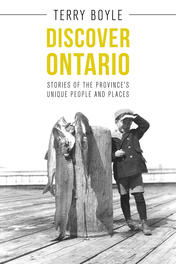
Fishing
At some time in the first quarter of the nineteenth century someone developed commercial fishing on Georgian Bay. The introduction of fishing to the Thirty Thousand Islands region was achieved through the natural extension of operations further down the Great Lakes.
Georgian Bay fishery grew in time to be the greatest source of lake trout and whitefish on all the Canadian lakes. The east side of the bay, with its deep water and sandy shoals, suited these fish well. In the 1850s, Georgian Bay harvest was upwards of a thousand barrels annually. When the railroad reached the south end of Georgian Bay, circa 1860, a more direct route to market was opened, and Collingwood, Meaford, and Owen Sound became the major fishing ports of Georgian Bay.
The expansion of the fishing market prompted more vessels to sail out each spring to the various fishing grounds in the bay. The men who fished some distance from home built a fishing station on the outer fringes of the Thirty Thousand Islands. The largest station was at the Bustard Islands. There were others at the Minks, the Snakes, and Champlain Island. These were sizeable summer colonies, made up of a number of fishermen and their families.
Improved transportation made it possible to market fish in very fresh condition. United States buyers sent schooners on regular rounds to collect the fish at the stations, packing them in ice in great wheeled boxes with a capacity of half a ton, that could be rolled on and off the schooners. One of the best available descriptions we have of the fishing industry in the nineteenth century is contained in the book entitled The Georgian Bay, written by C.L. Hamilton in 1893. After a sailing excursion on the bay he stated, “There were then over 400 men engaged in fishing in Georgian Bay, and equipment included 150 boats, 15 tugs and one and a half million yards of nets. An outfit for two men, a boat and sails, and three gangs of nets was valued at around $1100. In a season, these men would take perhaps twenty tons of fish, for which the buyer’s agent would pay seventy dollars to eighty dollars a ton. ” Mr. Hamilton also recorded that there was a small trade in fish oil at the time.
In the 1930s the sea lamprey entered Lake Huron and destroyed the lake trout population there. At first the Georgian Bay fish seemed to resist the invader from the Atlantic, but by 1960 there were no trout left in the fishing grounds. Other fish were attacked by the lamprey, the most important of them the whitefish. In 1959, the total catch amounted to only 14,515 kilograms of fish.
Large-scale commercial fishing in Georgian Bay came to a close. Today there are still a few commercial fishermen working their nets. However, when a licensed fishermen retires the government buys back his or her licence and usually does not reissue it. Therefore, the commercial fishermen are becoming a dying breed, just like the fish themselves. More questions need to be asked of our politicians regarding the restocking and current levels of fish in the Great Lakes. Restaurants operating in our tourist destinations in Georgian Bay never know if the commercial fishermen will be able to fill their orders or what will happen when the last commercial fisherman disappears. Their businesses may very well vanish like the fishermen and the fish before them.



